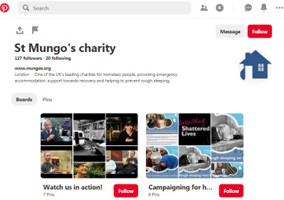Autobiographical memory can be a powerful motivating force when it comes to legacy fundraising, encouraging donors to look back over their lives and consider the connections between themselves and particular charities. Recent research demonstrates that thinking about leaving a legacy gift actually activates areas of the brain involved in visualised autobiography.
Often autobiographical memory is described as ‘nostalgia’. However, if we want to be strictly accurate, nostalgia, whilst a closely related idea, is not exactly the same. Rather than just reviewing one’s past, nostalgia is more emotive than that; it’s ‘a sentimental longing for the past’.
The power of nostalgia
Historically, nostalgia was seen as a potentially negative sensation, trapping those who experience it in the past. More recent research demonstrates that nostalgia, whilst sometimes experienced as bittersweet, can be extremely positive and, indeed, is often drawn on as a coping mechanism in difficult times.
It is described as a social emotion: when thinking nostalgically, people often reflect on the people that they have loved. Bringing those people to mind helps us to feel a sense of belonging, of being safe and secure. And as Saul Bellow says in his book, Mr Sammler’s Planet (1970), ‘‘Everybody needs his memories. They keep the wolf of insignificance from the door.”
People who are prone to nostalgia tend to experience less anxiety about death when reminded of their mortality, according to a study from the University of Southampton. Researchers also argue that nostalgia is surprisingly forward looking, linking past, present and future, so someone might look at a family photo and imagine all the good times to come. Triggering nostalgia encourages approach motivation (i.e. people feel a greater sense of drive, fun-seeking, and exploration), increases optimism, evokes inspiration, boosts creativity and promotes prosocial behaviour (including charitable giving).
Nostalgia then seems to offer a whole range of positives. But what does all of this mean for legacy fundraisers?
A close fit with legacy fundraising
Tapping into the power of nostalgia feels like a win-win for legacy fundraisers. After all, the research suggests that using nostalgia in fundraising might make it easier to communicate about legacies by alleviating people’s fears, but also by triggering a whole range of positive reactions.
Firstly, traditional legacy fundraising activities can potentially remind people of their mortality, and a common reaction to such reminders is avoidance, making it difficult for supporters to engage with our messages. The research implies that if we can trigger nostalgia, our audiences might be in a better place psychologically to engage with the idea of legacy giving.
If we want to do this well, then it might help to carry out some research with our donors to understand who and what our donors are nostalgic for; what for them creates a rosy picture of the past: people they’ve loved, places they’ve been, activities they’ve enjoyed. Guide Dogs, for example, have taken this approach. Rather than talking about their services in great detail in their TV advertising, they focus on the relationship that potential donors might have had with their own pets.
Looking ahead, we could tap into the creativity and inspiration that nostalgia creates by encouraging supporters to envision the positive experiences they will create in the future for others. We might particularly want to trigger nostalgia if we want our supporters to try a new experience, like coming along to a legacy event.
Alongside the written or spoken word, we could also reflect on how we might be able to stimulate nostalgia through other senses: through images, smell, music or even taste. Unicef used social media cleverly to trigger nostalgia and giving supporters the opportunity to create their own personalised timeline video.
Create a video timeline of your life and walk back through some of the biggest events in history with us: https://t.co/u0Wji6VL18 pic.twitter.com/1CvlUI6RHP
— Unicef UK (@UNICEF_uk) October 10, 2016
In summary then, nostalgia is subtly different from pure memory, having the additional dimension of sentimental longing. Rather than just reflecting on the past, if we can encourage our donors to think nostalgically about the people, places and experiences that have mattered to them, we can both make them feel better and make it easier for them to engage with the idea of legacy giving. And what can be better than a win-win for our supporters and the beneficiaries they care about?
Dr Claire Routley is the founder and fundraising consultant at Legacy Fundraising, tutor for the Institute of Fundraising’s qualification courses.
|
More from this series












